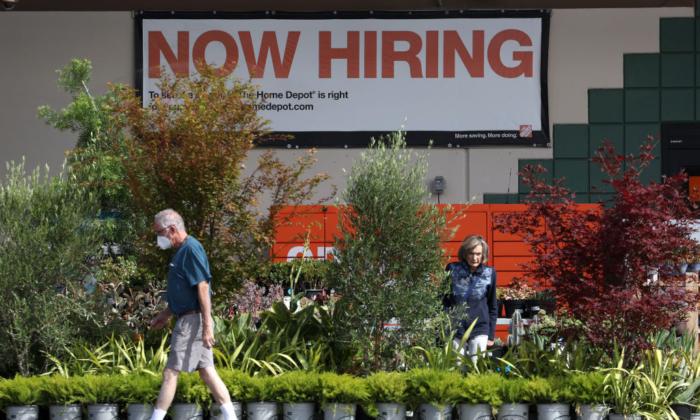New government data reveal that the number of job openings in the United States fell by more than 1 million between July and August, a far sharper drop than forecasters expected and a sign of cracks in the labor market.
“Big miss in job openings,” noted Alfonso Peccatiello, former portfolio manager for ING Deutschland and now author of the newsletter Macro Compass, in a statement on Twitter.
Fed Wants Job Vacancies to Drop
The drop in the number of openings is likely to be seen as a welcome sign by the Fed that its inflation-fighting rate hikes are filtering into the real economy and denting the job market.The Fed has been looking to bring the number of vacancies and unemployed persons into closer alignment. In August, there were just over 6 million unemployed persons in the United States, up from 5.7 million in July.
Fed Chair Jerome Powell said in September that he was hoping for vacancies to decline without an associated rise in unemployment.
Commenting on July’s figure of 11.2 million, Powell described it as “incredibly high relative to the number of people looking for work.”
The unemployment rate in August stood at 3.7 percent, with the Department of Labor set to release updated jobless data for September at the end of this week.
Harvard economist Jason Furman said in a statement that the reason the unemployment rate is so tight now is due to “sky-high” job vacancies and quits. Slightly more people quit their jobs in August than in July, Tuesday’s BLS data showed.
‘Trend Seems Right’
The job openings drop brings the ratio of vacancies to unemployed persons down from 2.9 in July to 1.7 in August, the BLS data showed.“The Fed wants to get this back to the pre-pandemic 1.2, so a big step was taken here,” Liz Young, head of investment strategy at SoFI, said in a statement on Twitter.
The Fed still has a “way to go” to bring the labor market into more balance, “but it seems the trend is right,” Peccatiello said in a statement.
Some analysts saw the sharp drop in job openings as a sign that the Fed should hit pause on its aggressive rate-hiking cycle.
“The Fed needs to slow their hikes immediately given this data point,” Mike Konczal, director of macroeconomic analysis at the Roosevelt Institute, a left-leaning think tank, said in a statement.
UNCTAD criticized aggressive rate hikes as an “imprudent gamble” that could “usher in a period of stagnation and economic instability for many developing countries and some developed ones.”
The Federal Reserve recently raised rates by 75 basis points, to a range of 3.0–3.25 percent, with Fed officials predicting rates to go even higher and remain at restrictive levels for some time.
Recent U.S. factory data showed manufacturing activity grew at its slowest pace in nearly two and a half years in September, as new orders and employment contracted. The Institute for Supply Management (ISM) survey, released on Oct. 3, showed that employment in manufacturing fell for the fourth time this year.
“Companies are now managing head counts through hiring freezes and attrition to lower levels, with medium- and long-term demand more uncertain,” said Timothy Fiore, chair of the ISM Manufacturing Business Survey Committee, in a statement.





